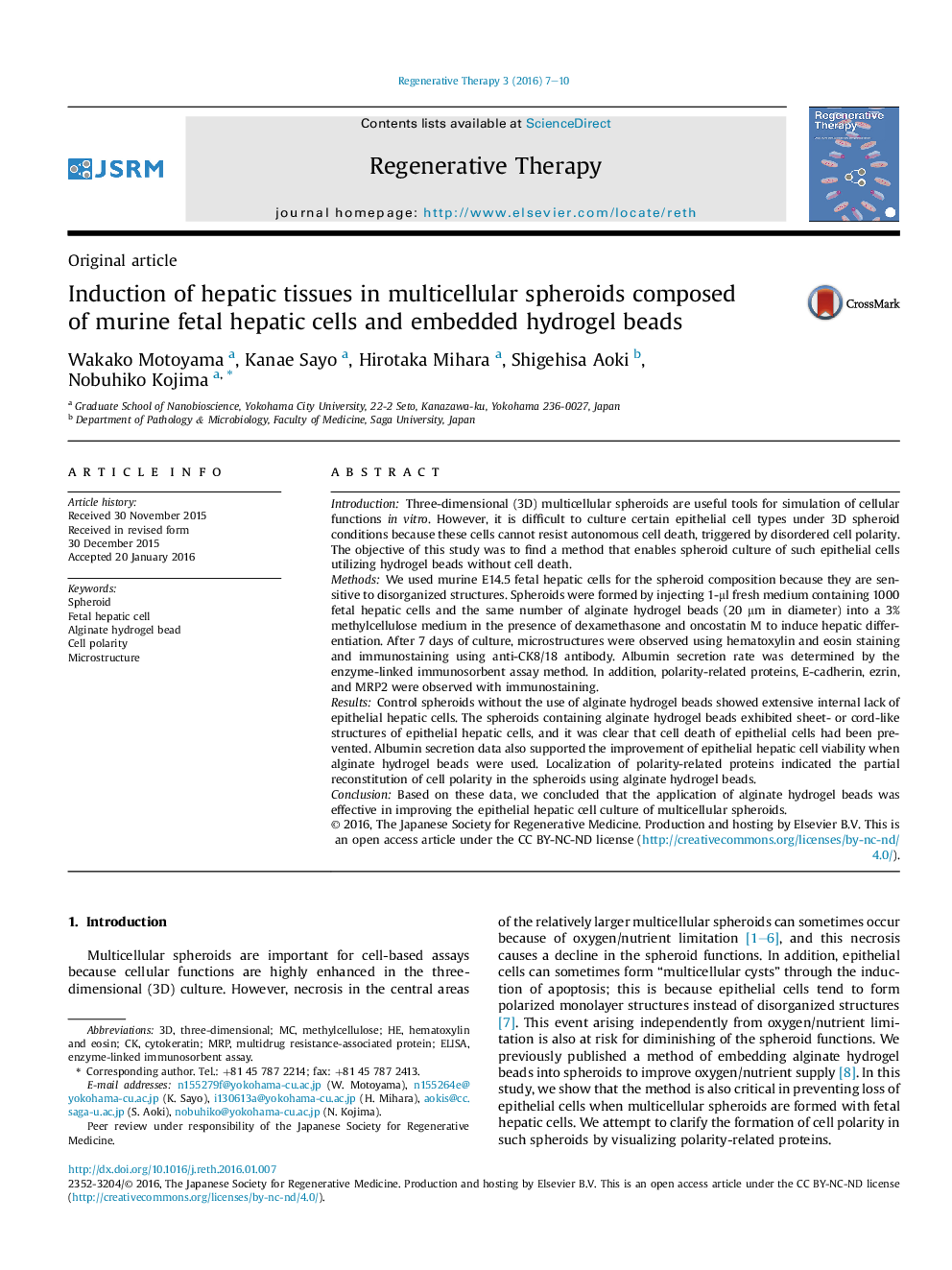| کد مقاله | کد نشریه | سال انتشار | مقاله انگلیسی | نسخه تمام متن |
|---|---|---|---|---|
| 2022300 | 1542363 | 2016 | 4 صفحه PDF | دانلود رایگان |
• It was difficult to maintain epithelial fetal hepatic cells in their multicellular spheroids.
• The difficulty to maintain the fetal hepatic cells was overcome by embedding of alginate hydrogel beads into the spheroids.
• Albumin secretion was improved by embedding of the alginate hydrogel beads.
• Cell polarity was partially established in the hybrid spheroids.
IntroductionThree-dimensional (3D) multicellular spheroids are useful tools for simulation of cellular functions in vitro. However, it is difficult to culture certain epithelial cell types under 3D spheroid conditions because these cells cannot resist autonomous cell death, triggered by disordered cell polarity. The objective of this study was to find a method that enables spheroid culture of such epithelial cells utilizing hydrogel beads without cell death.MethodsWe used murine E14.5 fetal hepatic cells for the spheroid composition because they are sensitive to disorganized structures. Spheroids were formed by injecting 1-μl fresh medium containing 1000 fetal hepatic cells and the same number of alginate hydrogel beads (20 μm in diameter) into a 3% methylcellulose medium in the presence of dexamethasone and oncostatin M to induce hepatic differentiation. After 7 days of culture, microstructures were observed using hematoxylin and eosin staining and immunostaining using anti-CK8/18 antibody. Albumin secretion rate was determined by the enzyme-linked immunosorbent assay method. In addition, polarity-related proteins, E-cadherin, ezrin, and MRP2 were observed with immunostaining.ResultsControl spheroids without the use of alginate hydrogel beads showed extensive internal lack of epithelial hepatic cells. The spheroids containing alginate hydrogel beads exhibited sheet- or cord-like structures of epithelial hepatic cells, and it was clear that cell death of epithelial cells had been prevented. Albumin secretion data also supported the improvement of epithelial hepatic cell viability when alginate hydrogel beads were used. Localization of polarity-related proteins indicated the partial reconstitution of cell polarity in the spheroids using alginate hydrogel beads.ConclusionBased on these data, we concluded that the application of alginate hydrogel beads was effective in improving the epithelial hepatic cell culture of multicellular spheroids.
Journal: Regenerative Therapy - Volume 3, March 2016, Pages 7–10
